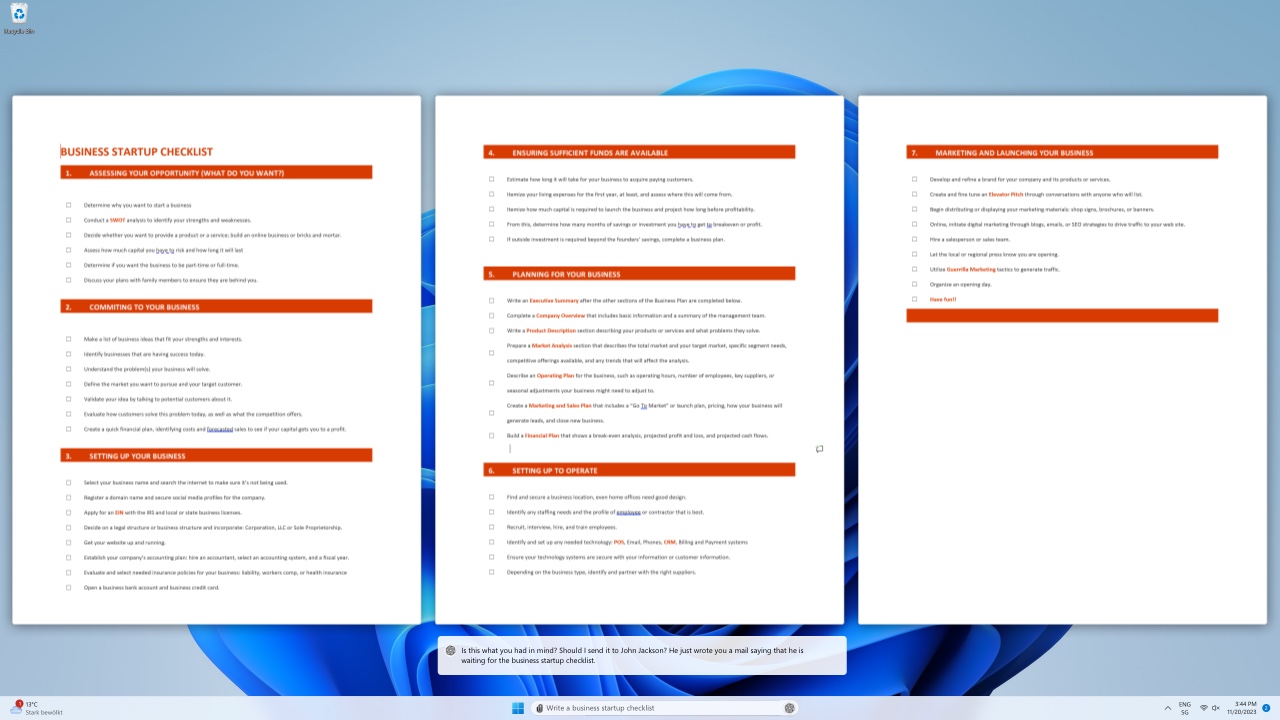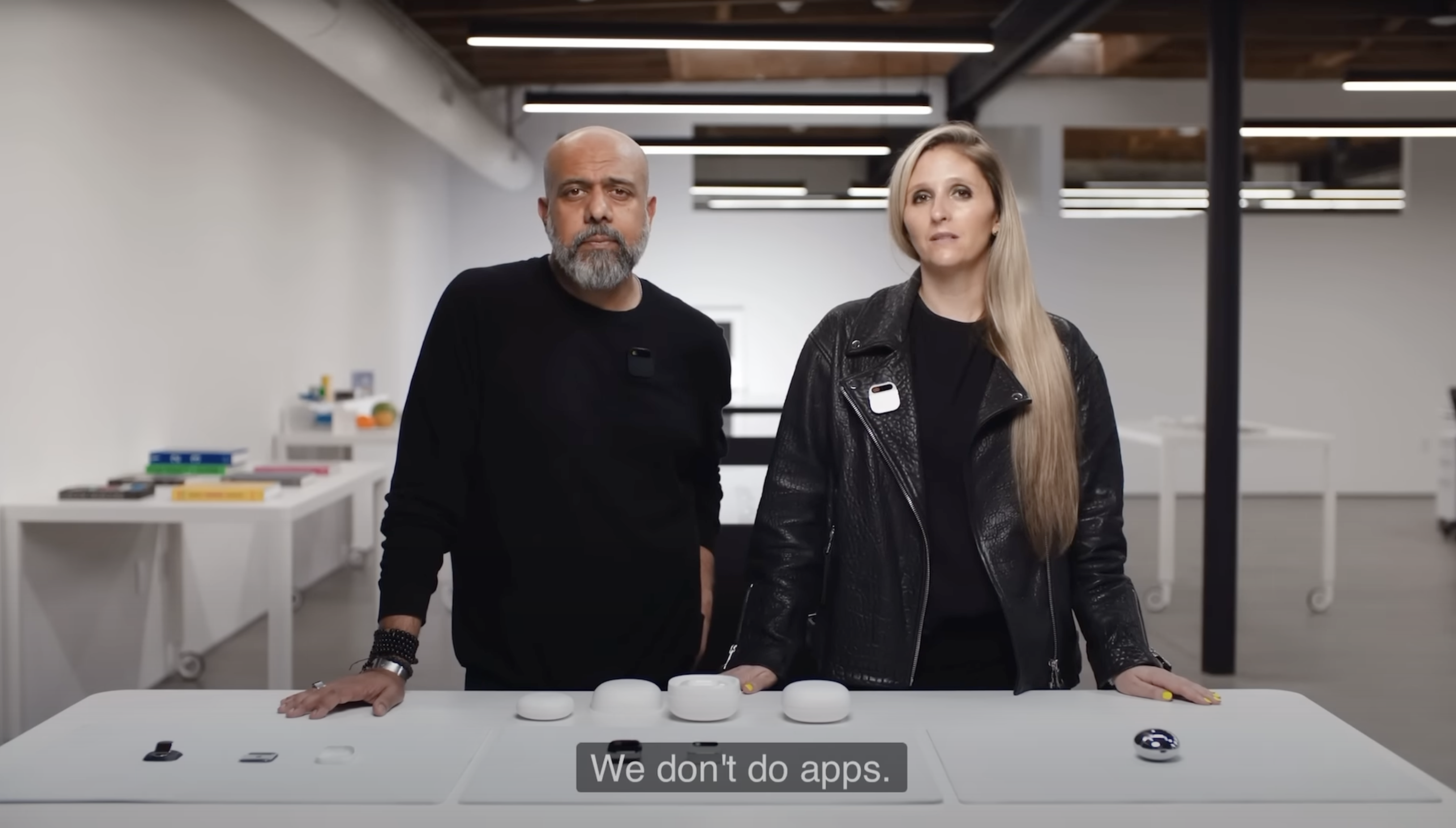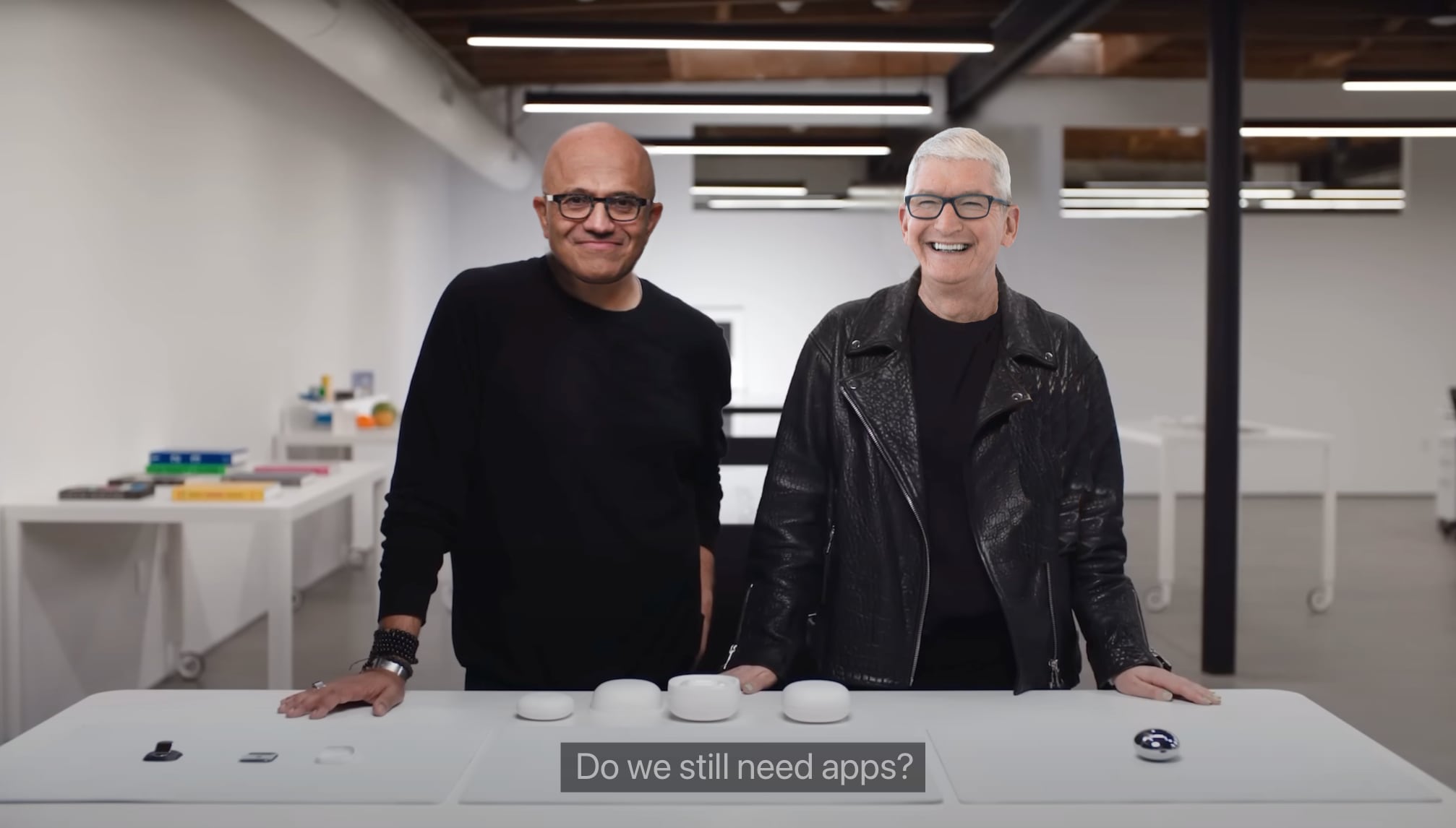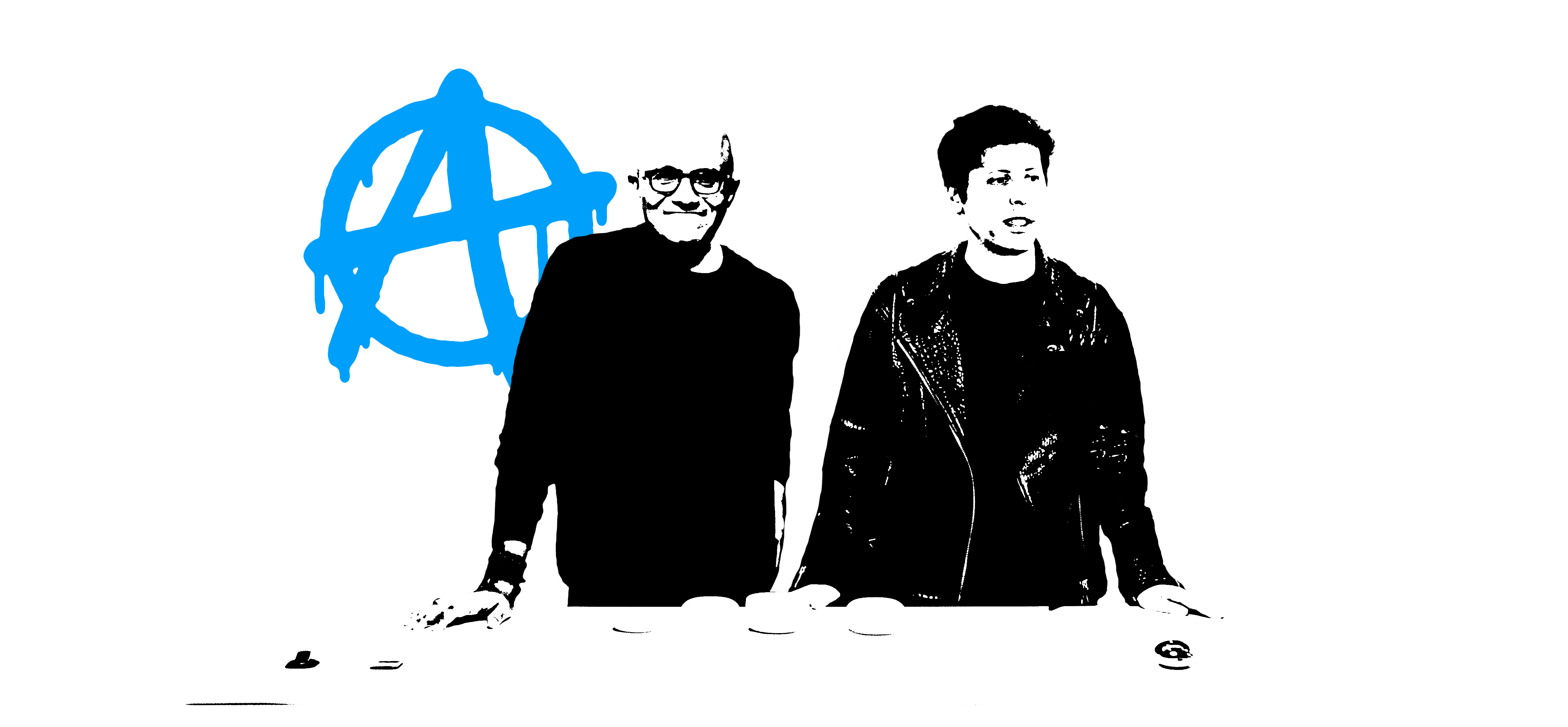Since the introduction of ChatGPT, adding “AI” to everything has become a no brainer. Should we follow? Plugging AI into our apps was a perfect fit, our apps are all text to begin with. But it seemed more than just a feature. What would it do to our apps? We had to observe and think this through, first. Rather than following the crowd, we wanted to see if there is a way to anticipate and, maybe even, lead.
Writing is thinking. iA Writer is designed to make thinking enjoyable. A writing app that thinks for you is a robot that does your jogging. After a year of observation, experimentation, and testing, we may have found a careful response to the challenges we face with AI. In fact we ended up doing the opposite of adding ChatGPT.
Now, let’s take one step at a time. First, let’s take a look at where we are. This article is part one of a series about the history, reason, and the design of iA Writer 7, our cautious response to AI. In this post, we’ll review what has happened in the app industry since the introduction of AI last November.
1. Initial Assumptions
Under the title AI and the End of Writing we did a summary of our assumptions at the end of January this year. Here’s a illustrated version.
Running mill: Microsoft’s Power Grab
Microsoft’s position here is similar to the position in Nine Men’s Morris, where you have a running mill: two isolated triplets and a checker that you can move back and forth between them. This allows you to win an opponent’s checker on every move no matter what.
- Monopoly: Microsoft’s 49% stake in Open AI, a technology that requires billions of dollars to develop and maintain gives them an almost unbeatable advantage.
- A hand in everybody’s pockets: Anyone who competes with Microsoft using GPT pays them.
- GPT3 vs GPT4 pricing: Microsoft has unlimited access to GPT-4. For you, it’ll cost more than 10 times more than the less powerful GPT-3.
- Cloning dependent competitors: Microsoft has a history of cloning successful companies like Zoom, Slack, Notion. On top of the usual strategic advantage, MS clones will have superior AI from the start.
“We don’t do apps.” The End of Software
One of our concerns was that AI had the structural potential to replace a lot of applications. A lot of AI apps looked and worked the same. And soon, ChatGPT would incorporate some of the features that AI startups were pushing as a selling point.
The recently launched Humane Ai pin took the final step: It proudly emphasized that it didn’t have apps, because it did everything through the operating system.


Microsoft could seamlessly embed the MS Office suite into Windows OS without the need for a separate office suite. The point-and-click GUI might become the exception to the rule. Who needs Word, Excel, PowerPoint, Visual Code Studio, or AutoCad, Photoshop, or iA Writer anymore?
Since all apps become AI chat apps, all AI chat apps could be done via the chat interface, i.e. the search box in the Windows taskbar. And indeed, we didn’t have much time to speculate what could happen before Microsoft announced that Bing would integrate ChatGPT. One Internet heartbeat later MS Office with GPT was announced. A few weeks later the integration of ChatGPT into Windows was a done deal.
On Apple’s platforms, Siri now desperately needs an update. Historically, Apple has done machine learning, feature-based, on device. If Apple manages to do something comparable to ChatGPT, on device, the role of software on Apple devices could also change: “Hey, Siri, make a spreadsheet with next year’s business plan!”


A future without applications is neither likely nor beneficial to anyone. In spite of that, it is happening right before our eyes. One app after another is giving up to become a ChatGPT function. Structurally, AI challenges the notion of independent apps. A lot of AI applications look and work like ChatGPT. And by that, they get ready to be swallowed by what they depend on.
First assumption: Apps will rush to implement AI to not miss out, degrade into AI features and get swallowed.
Social Impact
There are potential social implications of AI in everything that is communicated, but especially in written material:
- AI replacing tasks that require thinking
- People over-relying on AI to read and write
- Unchecked AI-based decisions
- The potential for error-prone AI decisions based on unchecked communication
- Lack of accountability for AI errors
- Doubts about whether written content was written by a human being
- Doubts about whether written content will be read by a human being
- General distrust of published information
- AI hallucinations can become urban legends
Second assumption: Human and robot text will become technically indiscernible.
Taken together, this painted an incredibly bleak future for a company focused on writing software. Some technology optimists might think we’re not seeing clearly. And indeed, from our vantage point, we can’t see many reasons to be unconditionally optimistic about the impact of technology that essentially replaces thinking. But we try.
Third assumption: AI problems will create new needs.
2. What Happened?
Becoming a Feature: The AI App Suicide
The adoption of AI was unlike anything we had ever seen. And the panic in the industry pushed everyone to get on board before it was too late. Many new products became AI apps, often overpromising and following a simple recipe:
- Integrate ChatGPT
- Overpromise
- Rebrand GPT as proprietary AI
This trend led to a monotonous market of AI-this-and-AI-that. Companies large and small jumped into the ChatGPT lifeboat, trashing the uniqueness of their product. The result was just as predictable:
- Become indiscernible from competitors
- Loss of character and reason to be
- Competing with ChatGPT
AI apps running on ChatGPT take the risk of becoming obsolete overnight. It’s easy for ChatGPT to integrate successful apps as a new feature. This is no longer speculation. It’s what happened to a wide range of startups already.
First observation: Apps using GPT risk becoming a ChatGPT feature.
An Elephant with Dalí legs
The recent troubles at OpenAI indicate that the company lacks identity and direction. It is overly dependent on a personality rather than its own identity. Microsoft is willing to do whatever it takes to keep its position. Most importantly, we witnessed a change from OpenAI to CommercialAI. It’s not about robot Gods, humanity and openness. It’s about making money.
The old board was set up to keep what was left of OpenAI’s openness open. The new board composition at OpenAI now includes representatives from Microsoft. It marks a transition towards unlimited profit, with the safety board dismissed, the not-for-profit aspect disbanded. But the impression it made remains. It’s a Dali Elephant with long thin legs.
Second observation: OpenAI/Microsoft has to be seen as one primarily commercial entity.
Think Ahead
Relying solely on ChatGPT is a short-sighted tactic that leads to dependency and potential user mistrust. Microsoft, Apple, and Google are moving AI to the OS level, making a big part of the standalone AI applications irrelevant as we speak.
With ChatGPT’s latest update, a number of short-sighted startups are about to go belly up. When you pay a company a percentage of your revenue, you provide them with an ongoing financial advantage. Additionally, by giving them access to your user data, you risk handing them the means to make your business obsolete.
The danger of being overtaken by Microsoft if we adapt ChatGPT is real. If you use ChatGPT, you will have to feed Microsoft with rent and data. For most operations, building their own AI that can compete with ChatGPT is an illusion. Unless you’re one of the big five (Microsoft, Apple, Google, Facebook, and Amazon), you can’t afford to develop and run it at their scale.
Let’s hope Apple stays true to its commitment to privacy and delivers on-device AI. If anyone can do it (requires compartmentalized AI and massive hardware improvements, especially on mobile), it’s Apple.
Third observation: Few companies think ahead in trying to address the resulting problems.
3. What Should We Do?
Not “what is AI?” but “what does it do to us?“
We did not spend our time rubbing our eyes at the unfolding disaster. We were hard at work testing and experimenting with AI and writing. We wanted to find out if and how it could be used to make what we offered better.
What we discovered was fascinating. In the vast stream of articles and books we encountered in recent months, a few stood out. Luciano Floridi’s view in The Ethics of Artificial Intelligence was one of the rare exceptions that offered a calm and useful view on how to deal with AI.
“…successful AI is not about producing human intelligence, but about replacing it.” -Luciano Floridi, The Ethics of Artificial Intelligence (p. 23). OUP Oxford.
Floridi points out that AI doesn’t mimic the way we think. It doesn’t think at all. AI does not recreate human intelligence. It is replacing it! That doesn’t sound like good news. But if you want to solve a problem, you need to see it clearly first.
First guideline: Think of AI as a tool that replaces human thought, and go from there.
Strengths and Weaknesses
What is the good side of a technology that replaces thinking?
- AI is a danger if you resign yourself to it and delegate all thinking to AI.
- AI is an opportunity if you use the extra processing power it can give us to think deeper, better, clearer.
We already knew that we couldn’t integrate ChatGPT blindly. But after a few months of trying to figure out its strengths and weaknesses, we knew we had to at least keep it at arm’s length.
Second guideline: Address the problems caused by AI.
We see the potential to use AI to think more, better, and clearer. But in every scenario we could think of, AI has to be kept outside of our applications.
Third guideline: Avoid third-party AI dependency.
What Next?
So, in summary, let’s review our assumptions, observations and rules we set for ourselves dealing with AI.
| Assumptions | Observations | Guidelines |
|---|---|---|
| Human and robot text become technically indiscernible | OpenAI/Microsoft have to be seen as one primarily commercial entity. | Avoid dependency on OpenAI/Microsoft |
| Apps will rush to implement AI to not miss out | Apps using GPT risk becoming a ChatGPT feature | Don’t level down, address the problems caused by AI |
| AI problems will create new needs | Few companies think ahead trying to address the resulting problems | Think of AI as a tool that replaces human thought |
We had to find an answer to the back-and-forth between ChatGPT and iA Writer inside the iA world. Just identifying the problem took us a couple of months. Defining it clearly and solving it took the rest of the year.
In our next post, we talk about the problems of writing with AI. The final piece of the puzzle is the design of iA Writer 7, our careful answer to AI. Subscribe to our newsletter to hear about the next steps.








